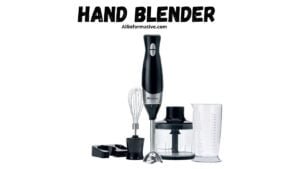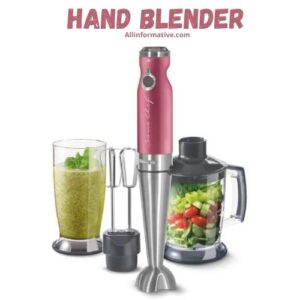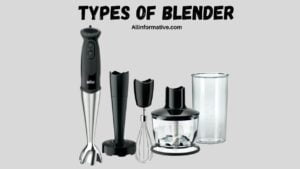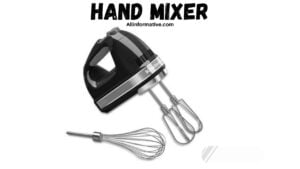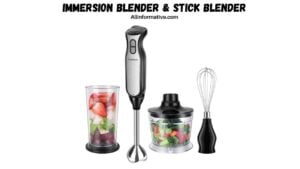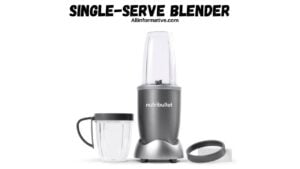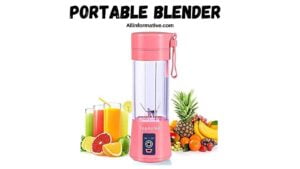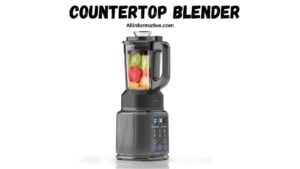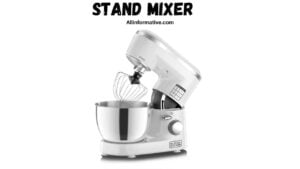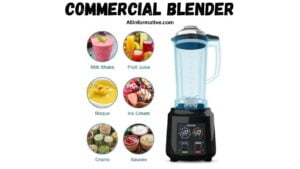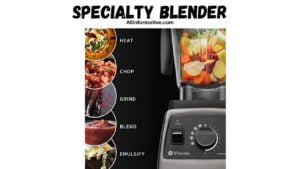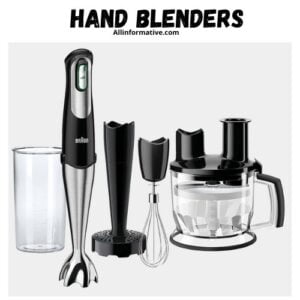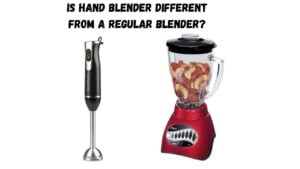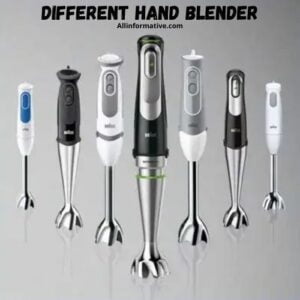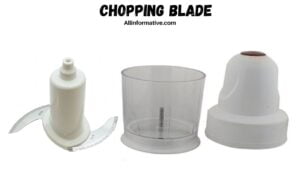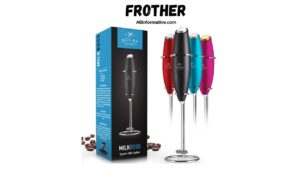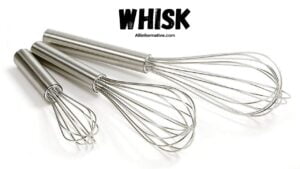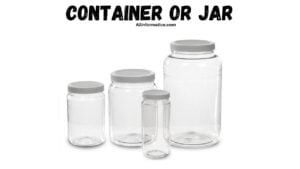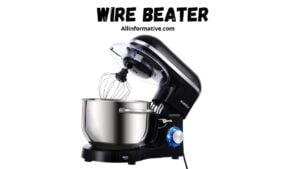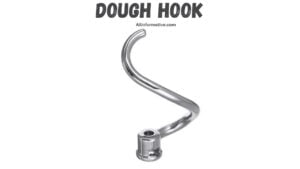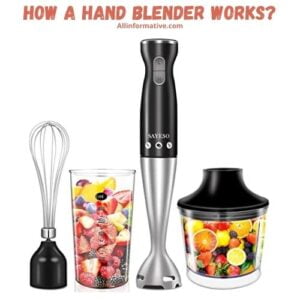A Blender sometimes called a Mixer or Liquidizer. The Hand Blender also known as stick blender, mini blender, immersion blender or wand blender. That is a kitchen blade grinder use to blend ingredients or purée food in container. In this page we talk about Hand Blender | Buy Hand Blender in Original Price Online.
Contents
Hand Blender:
Hand Blender is a kitchen and laboratory appliance used to mix, crush, purée or emulsify food and other substances. A blender called a mixer or liquidizer in British English. A stationary blender consists of a blender container with rotating metal blade at bottom, powered by an electric motor that is in base.
A stick blender comprises an electric motor driving rotating cutting blades at end of a shaft. It can immersed in food being blended, inside housing. It can held by hand. Some can be use while a pan is on the stove. Immersion blenders distinguished from worktop blenders and food processors. That require food to placed in special vessel for processing and from hand mixers. They only mix but do not chop.
Models for home and light commercial use typically have an immersible shaft length of about 16 centimeters. But heavy duty commercial models are available with shaft up to 53 centimeters or more. Home models are available in corded or cordless versions. Motor power rating ranges from about 120 W to over 600 W for a heavy duty model. Domestic models may supplied with goblet or other accessories.
The operation of an immersion blender requires that user hold down a switch for as long as blades operate. They can be tiresome for the user. Handheld blenders are ideal for small and specific tasks. But do not have as many uses as a countertop blender. The operation of an immersion blender requires that user hold down a switch for as long as blades operate. It can be tiresome for the user.
Types of Blenders:
Once upon a time if you wanted to blend your food you used wooden spoon. Then clever humans developed whisk before amazing eggbeater came to exist. Now we have blenders. So many blenders. We have hand blenders, immersion and stick blenders, portable blenders, countertop options. Ones that fit in stand, blenders that hold just enough for one person and heavy duty commercial ones.
We know that it can be hard working out which one you need. But don’t make common mistake of assuming bigger is better. The various different types of blenders have Advantages and Disadvantages. So, Here we are going to help you work out which one you need.
1. Hand Mixer:
These often called hand mixers and really just an electric version of old fashioned eggbeater. They may have different attachments but they mixer designed for really beating ingredients together. The most well known is the KitchenAid. However, Cuisinart and Hamilton Beach are also popular.
Because they have variable speeds and multiple attachments. Hand Mixture is also called Hand Blender. These are fantastic for a range of baking and desserts. They were not invented to used solely to whip up fluffy meringue. But since KitchenAid brought firsthand mixer to market in 1950s that has been one of the biggest selling points.
2. Immersion Blender & Stick Blender:
These are perhaps one of most common types of personal blenders. They are handheld ‘sticks’ with a comfort handle at one end and chopping blade surrounded by a safety guard at other. Immersion blenders and stick blenders are interchangeable terms. Although each brand may vary wildly in power and ability. There is no real difference when you are comparing a blender called immersion or stick.
One of the best uses for an immersion blender is to blend soups and hot liquids. They are also great for quick mixes where you are blending powder with liquid. Creating protein shakes, using powdered milk, or even an instant pudding are all effortless with stick blender. Immersion Blender & Stick Blender is also called Hand Blender.
3. Single-Serve Blender:
Single-Serve Blender is also known as bullet blenders. These types of personal blenders have been made popular by NutriBullet blenders, Ninja range and Magic Bullet. They come in varying sizing but most have a capacity to make single or double serve drink.
They are quite unique in way that they work. You fill ‘bullet’ shaped container with your ingredients, screw chopping blade to top. Then turn whole thing upside down and insert it into the bullet blender base.
These are original smoothie makers. They are fantastic and chopping up frozen fruit, ice and nuts to create a smooth drink. They are also good for making a quick omelet or pancake batter. However, you can really only use single-serve blenders to create very liquid recipes. Another popular use for these types of blenders are baby food preparation. They can make pureed food in a flash.
4. Portable Blender:
Portable blenders are a new type of blender to hit the market. It not be confused with ‘personal’ blenders which generally refer to the single-serve bullet blenders. While advertising will suggest you can make fresh smoothies in your car for most people. Portable blender is going to used in office or perhaps after gym. Which of course makes them perfect for smoothies and protein shakes.
They are also great for parents making baby food on the go. Yes, you can just pop one in your diaper bag and go out. Add a few veggies from your plate and a little water. You have instant baby food while you are enjoying your meal.
These types of blenders are made up of a clear glass tube. One end screws into the blade base which contains motor. The other end screws into the lid. The blenders are lightweight and smaller than average hydro flask, so are actually portable.
5. Countertop Blender:
Not to be confused with a food processor, these types of blenders are one-stop-shop for great drinks. The leaders in this market would be Vitamix and Kitchenaid, although excellent marketing from Blendtec and ‘make it blend’ campaign raised their profile.
They generally have a larger 64 oz or almost 2 liter capacity. So, countertop blenders are great option if you are going to be making drinks for family or party. One caution with using these types of blenders is to check carefully before using to blend hot liquids. Most countertop blenders designed for cold or cool liquids and lids that seal well.
This is great for keeping flying ice and smoothie ingredients from flying around. But causes a huge pressure to build up for steam from hot ingredients. It can cause an explosion. However, you can expand your thinking a little and turn these types of blenders into one-stop treat shop too. Blended smoothie can make most delicious ice blocks, creating a great healthy treat on summer days. You can even use them to create alcohol ice blocks for a fun adult treat for parties.
6. Stand Mixer:
Stand mixers also known as cake mixers because this is really what most people use theirs for. They are like hand blenders or hand mixers but far more powerful. KitchenAid, Cuisinart, Hamilton Beach, Kenwood and Sunbeam are all competing for top place as world’s most popular stand mixer.
The Hobart KitchenAid and Sunbeam Mixmaster were first on market. But didn’t become commonplace in kitchens until 1920s. Although larger commercial varieties had started appearing in bakeries before this. Stand Mixture is also called Hand Blender.
While most people use these mixers for cake batter, they generally have range of different attachments. That can turn them from a basic mixer into really versatile kitchen tool. Some also include option to add blenders, food grinders or even pasta cutting tools.
Whisk attachments make them perfect for meringues with no need to stand over mixer. While getting to right consistency. While a standard dough hook means making bread dough or heavy cookie dough. That is a simple task.
7. Commercial Blender:
If you are looking for something with pure power, then these types of blenders are going to what you want. The Vitamix 5200 and Cleanblend Blenders are both popular professional blenders but other semi-pro options. Such as Ninja and Blendtec also provide consumers with professional style blender.
These types of blenders are all about power. They intended to suit heavy user and they designed to blend more robust ingredients.
Commercial blenders are going to great if you want to make large batches of hummus, dips or intend. It create smoothies or iced drinks at least once a day. They are an absolute necessity if you are going to creating blended foods and drinks more than once a day.
8. Specialty Blender:
Not every homeowner will need a specialty blender, but if you spend a lot of time in the kitchen. Then you may appreciate extra power and performance that you will get with one of these blenders. Of course, you will pay a lot more for a specialty blender. But you can do more with it and will notice an increase in power.
You can not only blend, puree, chop and grind. But you can also make your own nut milks and whip up a smoothie in no time. These blenders have built to last for very long time. They are often models that you will see in restaurants.
Instead of worrying about your ingredients getting caught at bottom of blender. It not being mixed in, you won’t ever have that problem with specialty blender. Because they have designed to eradicate this problem entirely.
Description of Blenders:
The first blender with a spinning blade at the bottom was invent in 1922 by Stephen Poplawski. He wanted to make soda fountain drinks. The most popular early version of the blender was Waring Blendor with preference of “blendor” spelling. It also named after the orchestra leader and financial backer Fred Waring.
Unfortunately, there really is no single option that is going to do absolutely every function perfectly. However, it is not too hard to find a blender that will work for your primary need. Then you need to work out which option will work best for any other needs.
The biggest consideration should start with how often you intend to use your blender. As this will give you a good indication of build quality you will need. Then think about the function. Waring wanted to use the device to puree raw vegetables for his ulcer diet. The Waring Blendor also called as Miracle Mixer. It was also use in hospitals and labs, particularly by Dr. Jonas Salk as he worked on Salk Polio Vaccine.
Don’t make the mistake of thinking that more power is going to be best. Even the highest price tag. Different blades, different capacities and different attachments can all make a significant. It’s makes difference in how well blender will work with your lifestyle.
Is Hand Blender Different From a Regular Blender?
How an immersion blender differs from a regular blender? Is that rather than pouring liquid into te blender and turning it on. The immersion blender is insert into container of liquid like a pot of soup, for instance and turned on. You would then sort of swirl immersion blender throughout liquid to ensure that it’s uniformly blended.
An immersion blender is helpful when you have a large amount of puréed soup. Some other product to work with more than one blender full. It would require blending in batches. Then you have to use yet another container for holding blended soup while you finish the job. Which means using first unblended container, second blended container, plus blender itself. Using an immersion blender allows you to simply blend the soup in its original pot.
Uses Of Different Hand Blender:
Depending on the type of kitchen appliance you are using. You will have one or extra attachments that can used for various kinds of prep work for cooking. Here are some ways to use common hand blender attachments:
1. Chopping Blade:
Use the chopping blade of your hand held blender to chop vegetables and fruits evenly. If your blender comes with different blades, use them to cut or chop items to desired shape and size. The chopping blade also helps you puree fruits and vegetables for smoothies or soups. Also blend pancake batter or other liquid batters, smoothen lumpy sauces or gravies and much more.
2. Frother:
While this is not one of the common hand blender attachments. It is a useful one for those who like frothy beverages. Use it to aerate milk to create a thick, heavy foam for your coffee.
3. Whisk:
This hand blender attachment has wire loops joined together at one end. The thickness, size, and configuration of loops vary depending on purpose of the whisk. Mostly, whisks are use to blend ingredients well or to aerate a mixture. You can use these hand blender attachments to mix batters, make condiments, whip cream, etc.
4. Container Or Jar:
Use this attachment along with the blade attachment on your hand held blender to chop or puree vegetables and fruits. If you have got a jar attachment with volume markings on it. You can use it for blending liquid batters or for making smoothies without having to use a separate measuring cup.
5. Wire Beater:
Wire beaters come with hand mixers as an attachment. These are most useful for creaming butter and sugar to give baked goodies like cakes fluffiness. You can also use wire beaters to whip or mix heavy mixtures like frosting, cookie batter and mashed potatoes.
6. Dough Hook:
Spiral and C-shaped dough hooks also come with hand mixers. They designed to withstand elasticity of dough. Such are suit for when you’re working with heavy dough. Like that for bread, pasta or pizza. This attachment mimics kneading by hand, giving you perfect results with minimal effort.
How a Hand Blender Works?
The rotating blade is at the end near food, at the ‘end’ of stick so to speak. At the other top end, known as body, we have heavier engine part that drives motor.
So hand blender goes into or should we say, gets immersed in food. Hence all the obvious names to call it! So its obvious its called a hand blender because you hold it in your hand? Maybe its also called ‘blender stick’ because you stick it into the food maybe just because it looks like a stick.
The removable end that attaches to the blender body is technically known as the shaft. But it can be called the leg or the arm. It makes sense if you think of this amazing tool. Like an extension to your arm or it looks like leg. Some people even call it a hand blender wand. I get that, I for one, talk constantly about my magic blender, so I see the link.
What are Hand blenders best for?
Great for small jobs:
Like making pesto, dips, mayonnaise, whipped cream, scrambled eggs and so much more. Immersion blenders can whip up smoothies, milkshakes and frozen drinks for one or two people. But that’s where they cap out since the motor and blades. They are smaller and cannot run for a very long time without overheating.
Avoid hard foods:
The nuts and seeds or very fibrous ones, kale and carrots because they won’t get silky smooth. Instead, stick to a high powered blender or food processor. Also, blade needs to fully submerged to work. You may have trouble blending very small quantities.
Conclusion:
Hand Blender is a kitchen and laboratory appliance used to mix, crush, purée or emulsify food and other substances. A blender called a mixer or liquidizer in British English. A blender consists of a container with rotating metal blade at bottom, powered by an electric motor that in base. A Blender sometimes called a Mixer or Liquidizer. The Hand Blender also known as stick blender, mini blender, immersion blender or wand blender.
